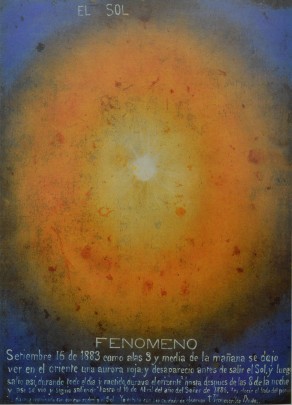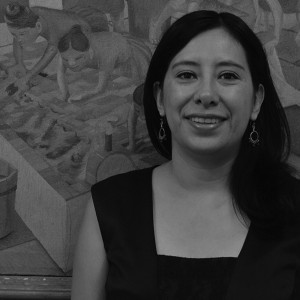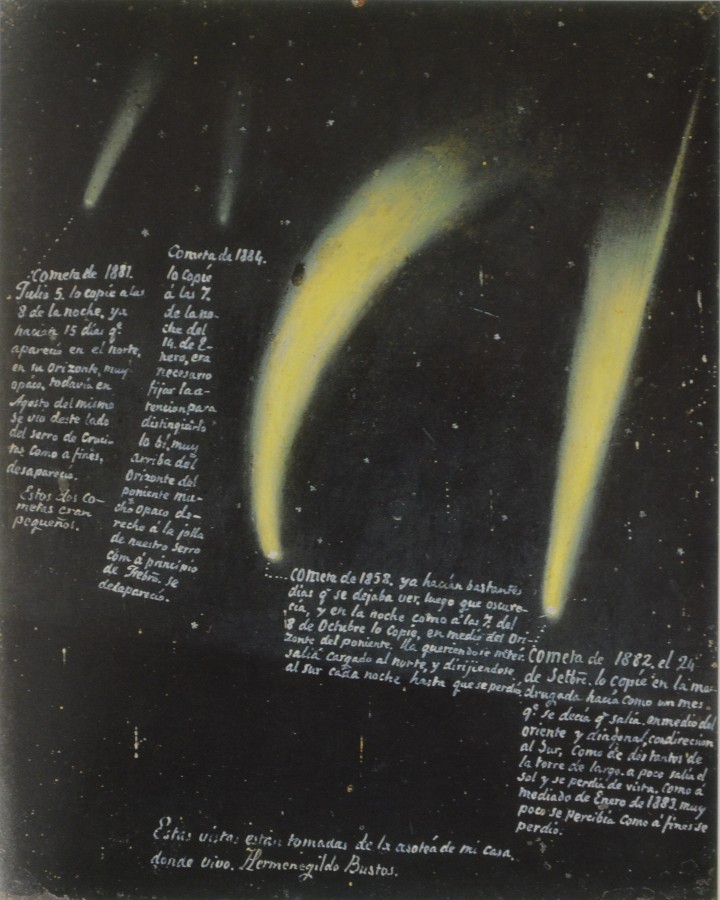Through his work, Hermenegildo Bustos (1832-1907) provided an artistic and historical testimony of the way of life of Purísima del Rincón society in the mid-nineteenth century. Bustos defined himself as indigenous and is characterized by his observational capacities, which he expressed in the natural phenomena that he painted. He is considered an extraordinary painter of portraits and the natural world by Walter Pach and Raquel Tibol, scholars of the history of Mexican art.
Bustos’ academic training is a mystery, as no evidence exists to show that he took classes with the great portrait painter from Leon, Juan Nepomuceno Herrera. Certainly, he is considered to be self-taught and is acclaimed for his mastery of the paintbrush. His way of looking at the world is expressed in self-portraits, votive offerings, altarpieces and the diversity of his still life paintings. We can also enjoy his artistic legacy in his portraits, as well as in religious images and murals in the Parish Church of Purísima del Rincón in the state of Guanajuato.
Given his importance, the Alhóndiga de Granaditas Regional Museum of Guanajuato has dedicated a permanent gallery to Hermenegildo Bustos, which houses one of the richest collections of the distinguished provincial painter. This collection was amassed by José Chávez Morado, an exceptional Guanajuato painter, muralist, cultural promoter, and founder of the museum.
Portraits are one form of expression that are meticulously crafted in the oeuvre of Hermenegildo Bustos. According to Raquel Tibol, the hands are emphasized in certain pictures, accompanied by objects such as rings, books, rosary beads, prayer books and missals, among others, which reflect the traditions and customs of the people of the Bajío region. Furthermore, through the depiction of hairstyles, jackets, dresses, lace blouses, raw cotton shirts, broaches, earrings, necklaces, bows and hats, the artist adds to the historical memory of Mexico with the tastes of the people of Purísima del Rincón.
Families, children, women, men, the elderly, post-mortem portraits and marriages in the society of Purísima del Rincón are captured and described in the images, which reflect both indigenous and mixed race faces and depict all of his community without distinction. The highlighted aesthetic values are realism and sincerity, as he replicates physical characteristics, gestures and features in a natural way. His portraits vary between small and large sizes and his preferred mediusm were oil on canvas, oil on metal and pencil on paper, all of which can be seen in this permanent exhibition.
Bustos also tackled the recreation of natural events, such as comets and meteorological events, with sobriety, sincerity, respect and originality. These were atypical expressions in the painting of his time. These natural events are comprised of two elements: first, the visual record and, second, a brief description of the event depicted.
For example, the work "Fenómeno" (“Phenomenon,” 1883), painted on metal, replicates an event which occurs in the troposphere (the lower layer of the atmosphere closest to the earth’s surface) and reaches to approximately 14 miles in height. When it is hot and there is a little bit of humidity, evaporation occurs and water tends to rise to the top of the troposphere to form clouds. However, if it is cold, the vapor crystalizes into hexagon structures and the ice crystals alter the course of the sun's rays due to the morphology of the crystals. The sunlight passes through this layer of ice and we observe the physical phenomenon of light refraction, which Bustos depicted without fully understanding.
As for his work known as "Los Cometas" (“The Comets”), Hermenegildo Bustos painted four of these phenomena in oil on metal, which he observed from the rooftop of his house. Each one is accompanied by a note of the date, hour and place, as well as some comments from the artist himself. Miguel Ángel Trinidad Hernández, head of the Astronomy Department at the University of Guanajuato, stated in an interview with Gabriela Sánchez Villegas that it is admirable how Hermenegildo Bustos recorded the comets over 30 years. “I imagine that he didn’t know, but here he was depicting two phenomena which occur in relation to comets.” He refers to weak and strong comets.
A comet is made up of various chemical elements, including ice and dust, and when it is very far from the sun it cannot be seen. It is structured in three parts: the nucleus, which corresponds to the central part; the coma, which appears when the comet moves closer to the sun and, finally, the tail, which is the final, straight part. Strong comets are characterized by their intense shine and the weak ones by being less visible to the human eye.
Bustos had the good fortune of capturing Donati, a comet which was discovered by the Italian astronomer Giovanni Battista Donati, who observed it for the first time in 1858. This comet is notable for its intensity, and the painting by Hermenegildo Bustos reveals his originality and sensitivity to the subject.








